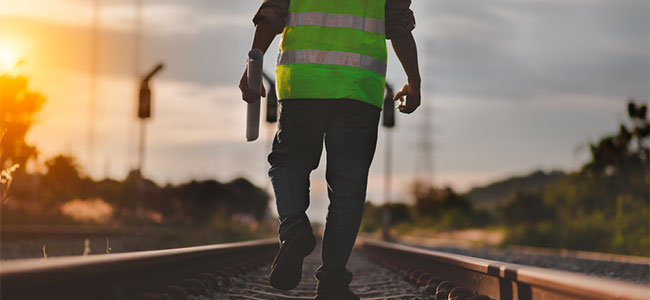
Raising the Bar: The Rise of Rigid Rail Systems in Aviation and Rail Worker Safety
How the next generation of fall protection systems will streamline safety, productivity, and cost-efficiency in transportation businesses.
- By Kevin Kelpe
- Oct 11, 2023
In the high-stakes environments of the aviation and rail industries, a single misstep can have severe consequences. Imagine a mechanic working above the ground, diligently maintaining an aircraft, or inspecting a sprawling train. It’s not only their lives that hang in the balance but also the safety of the passengers who depend on the integrity of these machines.
However, maintaining safety while maximizing productivity is often challenging in these demanding environments. Traditional fall protection systems, while necessary, can often hinder movement and decrease efficiency. But what if there was a solution that promised both uncompromised safety and streamlined productivity?
Rigid rail systems do exactly that, providing effective fall protection while enhancing operational efficiency. This article will guide you through the transformative power of these systems in maintaining robust safety standards, enhancing productivity, and significantly reducing costs in the aviation and rail industries. From understanding the intricacies of low fall clearance and worker mobility to the benefits of trolley rail systems, you’ll discover how safety and efficiency can truly go hand-in-hand.
So, whether you’re a frontline worker navigating an aircraft or train, a safety officer dedicated to upholding the highest safety standards, or an executive aiming to boost operational efficiency, it’s time to raise the bar and explore how these innovative fall protection systems are rapidly enhancing safety and productivity in the aviation and rail industries.
The Challenge
In the bustling world of aviation and rail industries, worker safety and efficiency are paramount. Employees in these sectors frequently navigate challenging environments, with two issues standing out: low fall clearance and the need for worker mobility.
Low fall clearance, a precarious situation — Low fall clearance essentially refers to the limited distance available between a worker and the ground or obstruction below. In other words, there’s very little room for error.
Picture a rail yard worker walking along the top of a train. In this scenario, the worker is high enough off the ground to be seriously injured in a fall but may not be high enough for more common fall protection methods to arrest their fall. This proximity presents a unique problem: the fall protection system must arrest a fall almost instantaneously.
This article originally appeared in the October 2023 issue of Occupational Health & Safety.